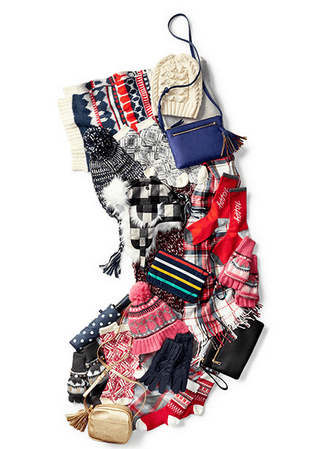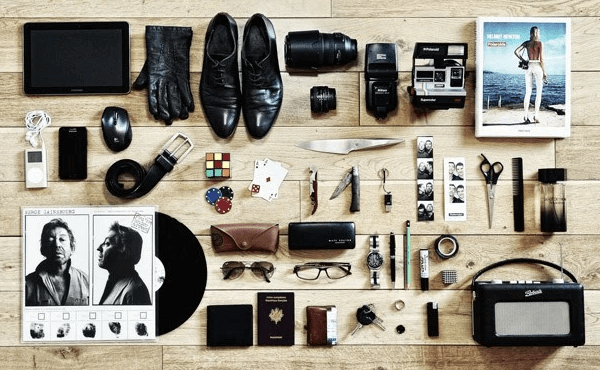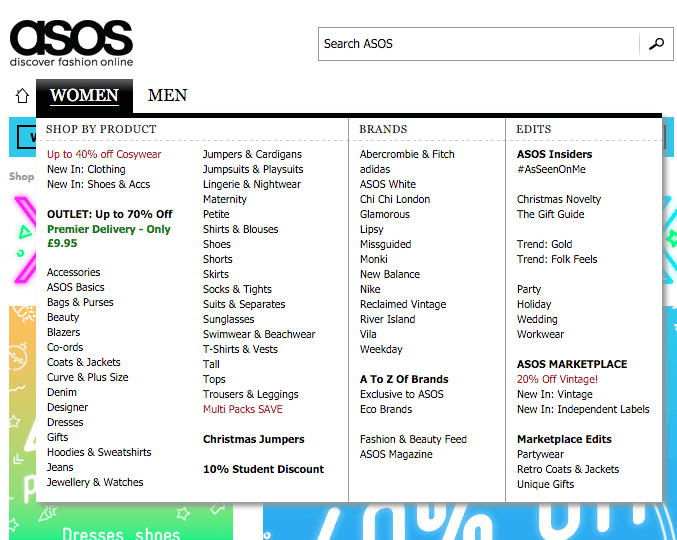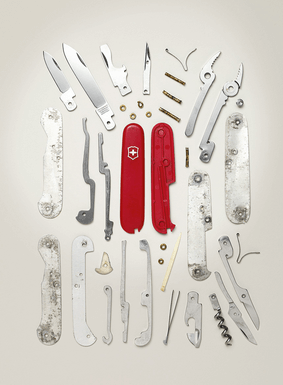All around us, visual cues and signals are priming us to make purchase decisions. We are all being primed all the time – the advertising industry survives because of this.
From the smell of movie theater popcorn to the sponsored ads on your favorite website, exposure to things outside of your conscious attention influence the choices you make.
This force is omnipresent – and for the large part, invisible. But there’s a method behind the magic.
Learn how to control your customers’ minds – well, when it comes to purchase decisions anyway. These psychological product placement strategies are Jedi mind tricks that hold the key to becoming a master purchase influencer.
Knolling
To start, what is knolling?
Knolling is the process of arranging related objects in parallel or 90 degree angles as a method of organization. It has been around since the 1980s, but has become increasingly popular on social media over the past year.
What’s the benefit of knolling?
Online stores such as Gap and Sephora are using knolling to showcase their wares in a specific environment. Below, look at how Gap used knolling to advertise for holiday specials.

By placing products in a certain arrangement or next to something that evokes a positive emotion—such as a flannel shirt next to a tree branch—consumers are primed to associate the two items.
Look at the photo below. This photo shows off products with a certain subconscious connotation – of a gentleman, a traveler, an intelligent and refined man.

According to Johan Wagemans, an experimental psychologist specializing in visual perception at the University of Leuven, images that depict items in a tidy, grid-like manner are fundamentally different from the stimuli the brain ordinarily gets.
Since humans tend to look longer at novel things that puzzle or delight them, customers will look at an image that applies knolling longer than a simple image with only one or two objects.
Showing customers your product in a unique or thought-provoking context can spell the difference between a browser and a buyer.
Not sure what to do with all that space on your homepage?
Increase conversions with knolling and showcase a few popular products with objects from nature to grab the attention of someone casually perusing your site.
You can also use knolling to make a product seem more tangible. If consumers are able to connect with a product on an emotional level, they will be more likely to purchase it.
Showing a pocketknife disassembled by laying out all the components in an artistic, organized fashion allows the consumer to connect with the product more deeply than a showing a complete pocketknife from a variety of angles.
Smart Organization
The total number of products we have to choose from matters less than the number of product categories. Prevent choice overload by dividing products into many categories, thus reducing the numbers of available comparisons. Look at how Asos does this to divide their inventory.

Did you know that today 50.3% of eCommerce traffic originates from a mobile device? This means half of your customers are squinting at your product grid on a small screen. To optimize for mobile users, limiting the number of products in each category also reduces scrolling and pagination on category pages.
Reduce
It may be counterintuitive, but limiting choices makes choosing easier. People are less inclined to make a purchase when faced with a surplus of options.
Companies that find the right balance will consistently outperform their competitors who haven’t found that sweet spot.
When Proctor & Gamble cut their Head & Shoulders line from 26 products to 15, the organization saw a 10% increase in sales.
Look at Beardbrand shows off just a few collection choices to limit options and keep customers from becoming overwhelmed.

Retarget
People who have visited your website at least once are more likely to come back than people who have never landed on your homepage. Did you know that 72% of Millennial shoppers respond favorably to retargeting?
You can make the most of your advertising budget by priming potential buyers after they leave.
Be careful—retargeting can be a double-edged sword, so don’t overdo it. People don’t like to be reminded that online retailers are tracking their activity.
Try using non-specific targeted advertisements to limit the creep factor.




